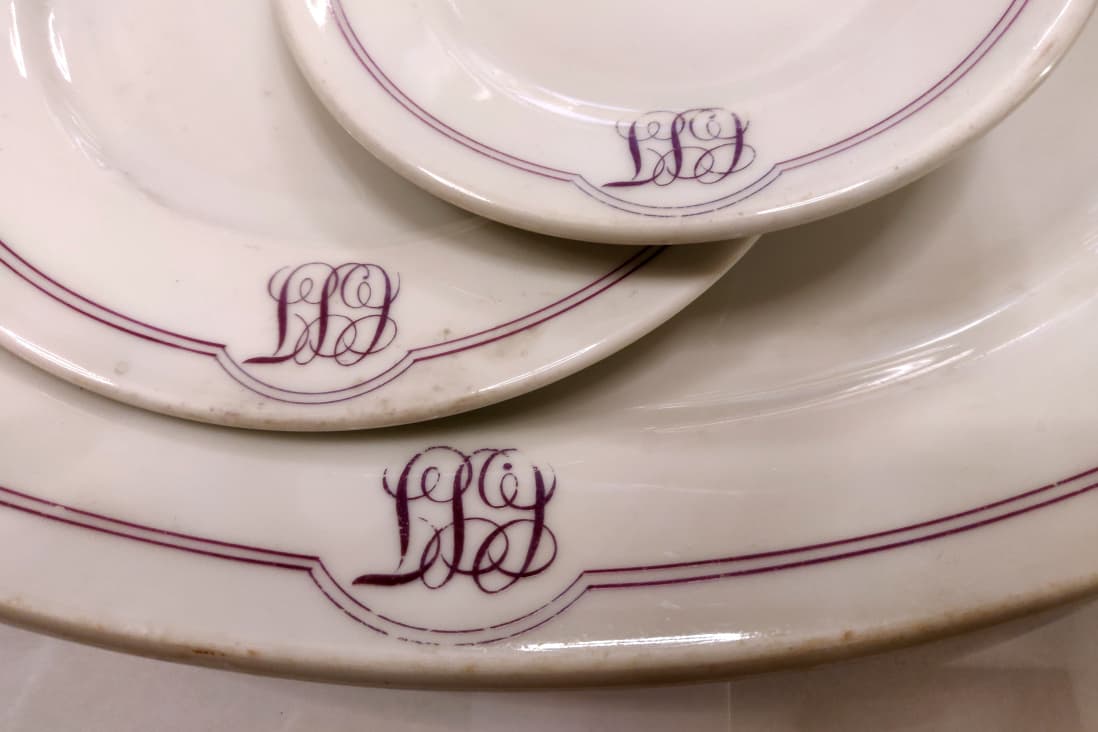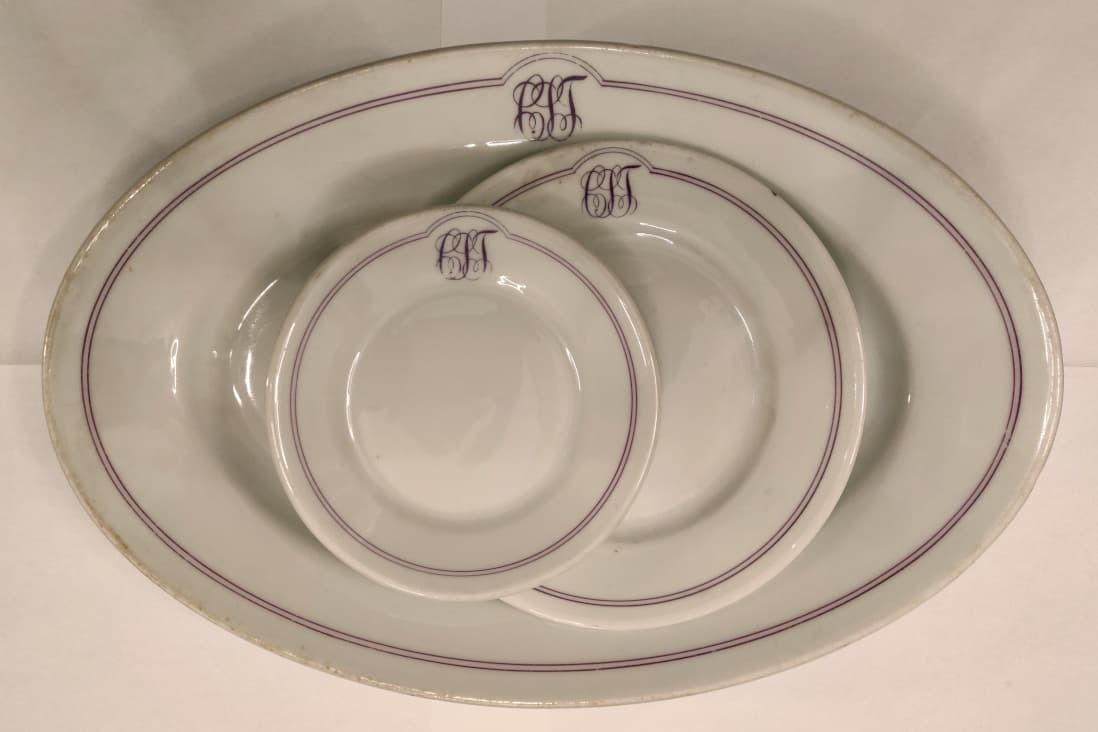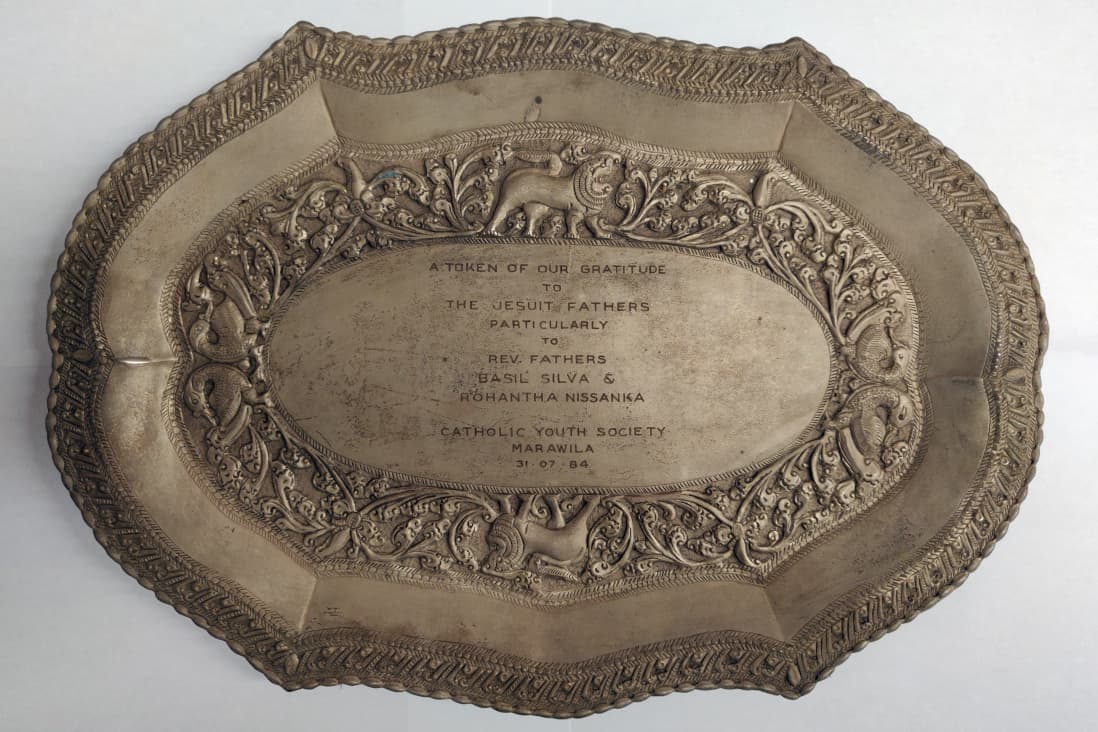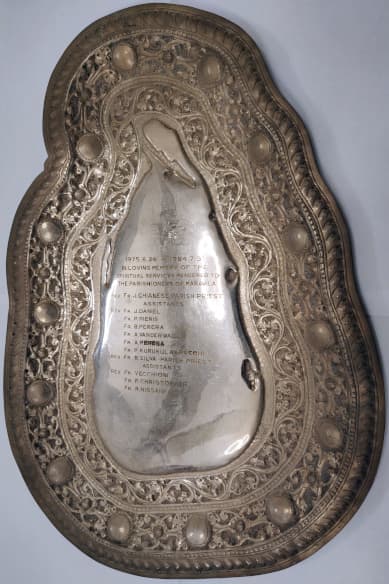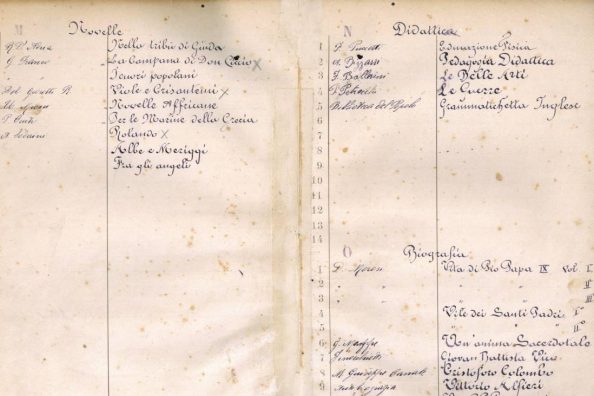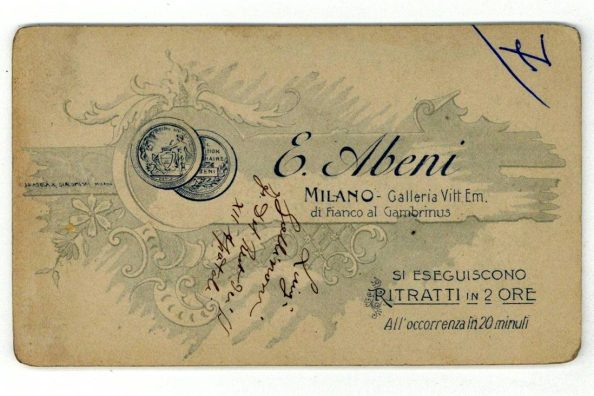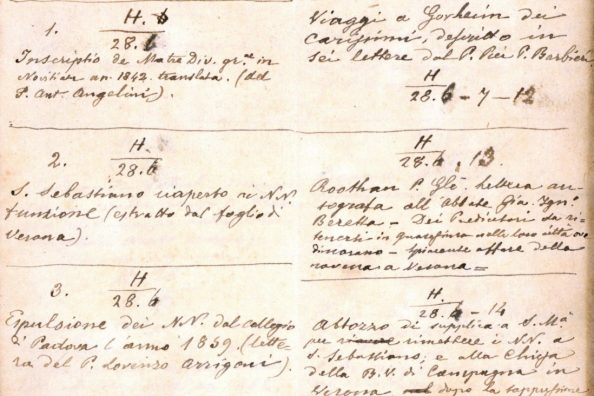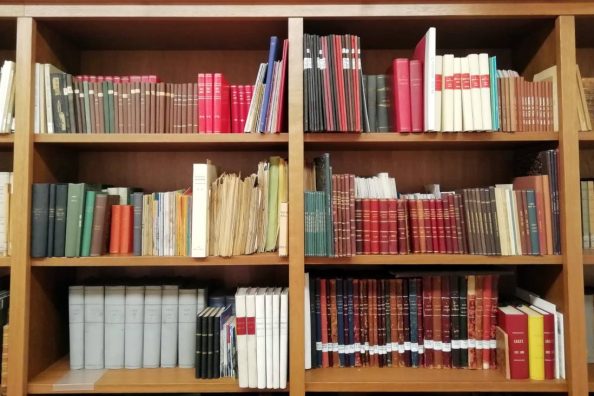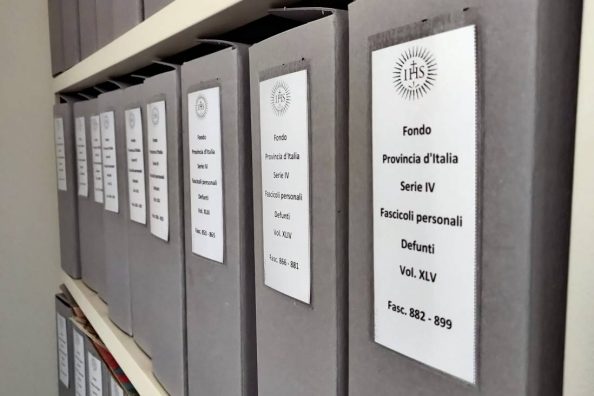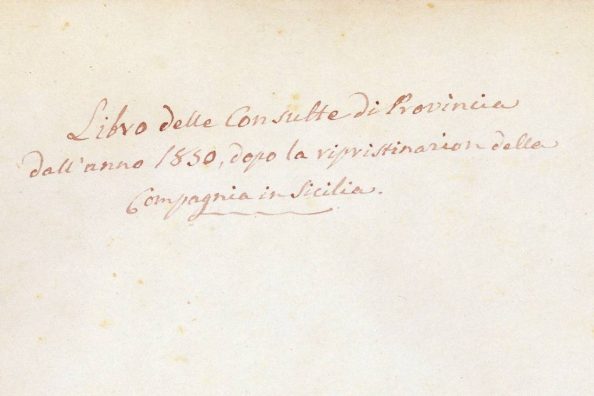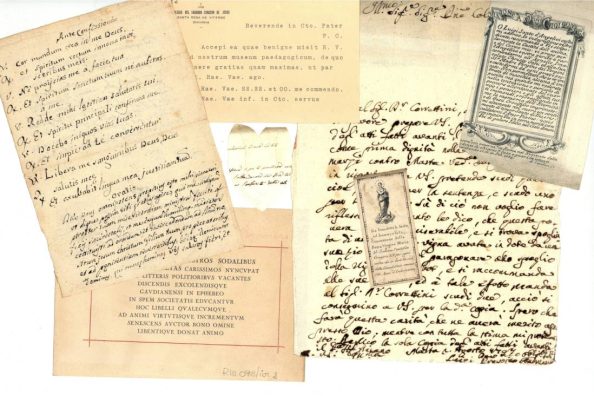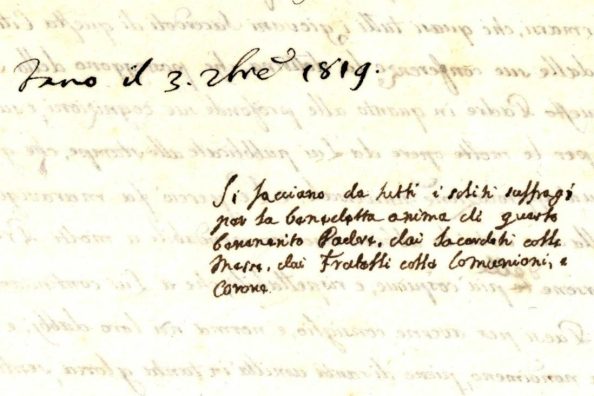Plates, trays and crockery: from the college to the Archives

What are plates and trays doing in our compacts? Our Archives do not only store documents; often the folders contain objects that have an archival link with the rest of the documentation: objects of everyday life, objects linked to particular historical events such as the story of Fr Pietro Alagiagian, or relics.
The plates of the college of Cuneo
The objects we are dealing with today are part of the everyday life of Jesuit colleges and residences, particularly in Cuneo and Vico Equense.
The plates you see in the photo are in fact the last survivors, as Fr Pasquale Mauro recounted, of the numerous services available to the St Thomas’ College until 1937 and later to the apostolic school which was based here for several decades and also attended by the Jesuit.
They bear the logo and coat of arms of the college, as for the crockery of all the colleges, which, although they have not come down to us, have been portrayed in the refectories, arranged on the tables in various photographs.
The trays of Vico Equense
We then move many kilometres further south, to the opposite side of the Peninsula from where some trays used in the school of Vico Equense and at Conocchia probably reserved for special occasions.
The precious presence of these objects gives us a concrete fragment of everyday life, especially of the many brothers who filled, cleaned, polished and stored these dishes.
If we concretely possess few examples of these types of objects, the papers come to our aid to provide us with precise and detailed lists of what was contained inside the sideboards, cupboards and kitchens of boarding schools and novitiates.
Our documentation allows us to reconstruct entire pantries with our imagination.
The objects listed in the documents
In many inventories of boarding schools and residences we find the most varied kitchen utensils, trousseaux, materials listed. For example, we know that in the college of Bormio, pewter cutlery and crockery was used, which was more durable and cheaply made than silver or ceramics.
In addition to inventories, it is sometimes possible to find lists of goods and furnishings that arrived at a residence or were the result of a move from one house being closed to another. This is the case with a handwritten note found among the papers of the Chieri residence, dated 2 November 1873 and entitled “household goods brought to Chieri by Fr. G. A. Demaria”.
The list includes the following objects:
- night table
- full dunnage
- mattress with two sleepers and three pillows
- night chair
- sheets
- bottles
- 12 pieces of cutlery with a spoon
- 2 spoons and a knife and a serving knife
- tablecloth and napkins
- Barrels, casks and tubs
- Copper and bronze pots
- Pans
- Casseroles
- Copper warmer
- Marble mortar with wooden piston
- Tin saucepan
- Lids
- A basket
- A tin demijohn for oil
Registers and inventories again open the doors of the kitchens of novitiates and residences, allowing us to look directly at the shelves.
Photographic documentation shows us tables of boarding school students or tables of Jesuits in residence, from the inventories of the houses we know the quantity and type of provisions.
Maria Macchi
